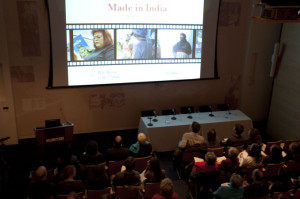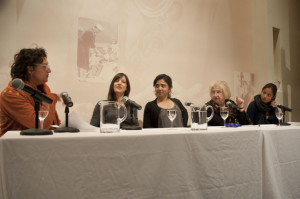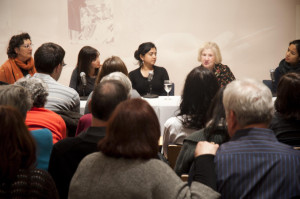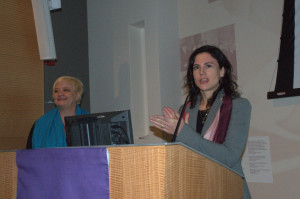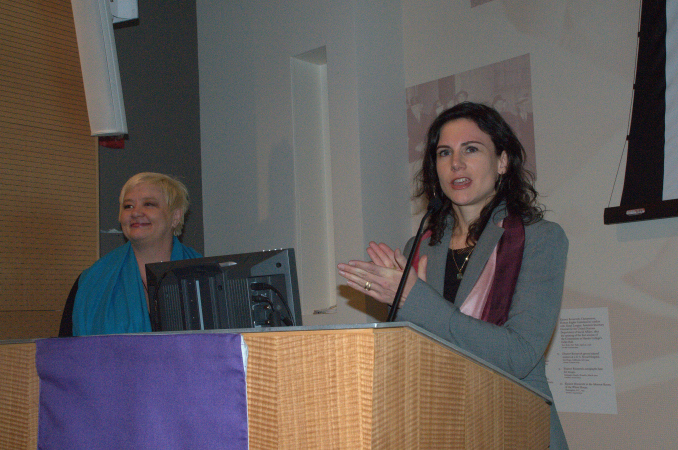
Jen Busse, RN, MPH, is an intern at the CHMP, and currently pursuing an MS in nursing as a Family Practice Nurse Practitioner at Columbia University.
Those who watched Made in India at CHMP’s Film and New Media Series event with their own preconceived notions regarding reproductive tourism were left with more questions than answers. With the film, filmmakers Rebecca Haimowitz & Vaishali Sinha, expertly create a nuanced view that thoughtfully represents perspectives of both infertile couples and the reproductive tourism industry without vilifying either side. In fact, the moviegoer finds themselves sympathetic to both sides in this story. The film leaves one questioning the currently unregulated world of international surrogacy; its need for parameters to protect families seeking a surrogate mother, as well as for the surrogates, themselves.
Made in India is a documentary that transports the viewer into the world of surrogate “outsourcing” to India. We are taken on the journey of a blue-collar American couple in their quest to have a biological child. The viewer watches them struggle to articulate their case to an often-skeptical public in America. We witness a strong bond between the would-be parents, as they trudge through hormone treatments, make the long trip back and forth to Mumbai, and finally, are nearly unable to take their children home with them. We watch the trials of the surrogate, who later finds out she is pregnant with twins. She struggles through relationships with her family and friends, and then sufferes a placental abruption, a medical emergency, early in her third trimester.
Following the film was a panel discussion moderated by CHMP’s Barbara Glickstein with the filmmakers and two experts in the field: Dr. Carole Vance and Daisy Deomampo. The panel and audience discussed how the surrogate, who at first the audience believes is powerless, actually has a strong ability to negotiate her interests with respect to her husband, the medical tourism company, and the couple she provided a surrogacy for. However, when it comes to the initial contract she had entered into, there existed no legal enforcement mechanism.
The film, however, does not portray the worst-case scenario in these situations, as Dr. Vance pointed out. The filmmakers noted that a pregnancy is not guaranteed in these contracts and loss of a pregnancy is common. The film chooses not to take the easy way out and does not latch on to an extreme of cases. Consequently, it does not romanticize or disparage, but portrays the agency of the film’s subjects. It paints a complex picture that is international surrogacy. While the case shown in the film is not the worst, one is left to wonder what happens in such cases. Rather than condemning the practice of reproductive tourism, the filmmakers highlighted the need for regulation of the industry. The need for regulation is especially true, as shown in the final 5 minutes of the film, because this particular company has plans to expand to other developing countries.
While the biological parents and United States Department of State ultimately negotiate a way for the twins to leave India, the viewer is left with concern that this may not be the case in other situations. Fear also remains of an industry unregulated, and therefore unable to protect the basic human rights of the surrogates, for whom offering surrogacy is an increasingly appealing way to provide for their families–especially when they are left with few other options. Perhaps most importantly, the film raises the point of how policies, globally, will be required to keep up with growing and evolving international industry and technology.



